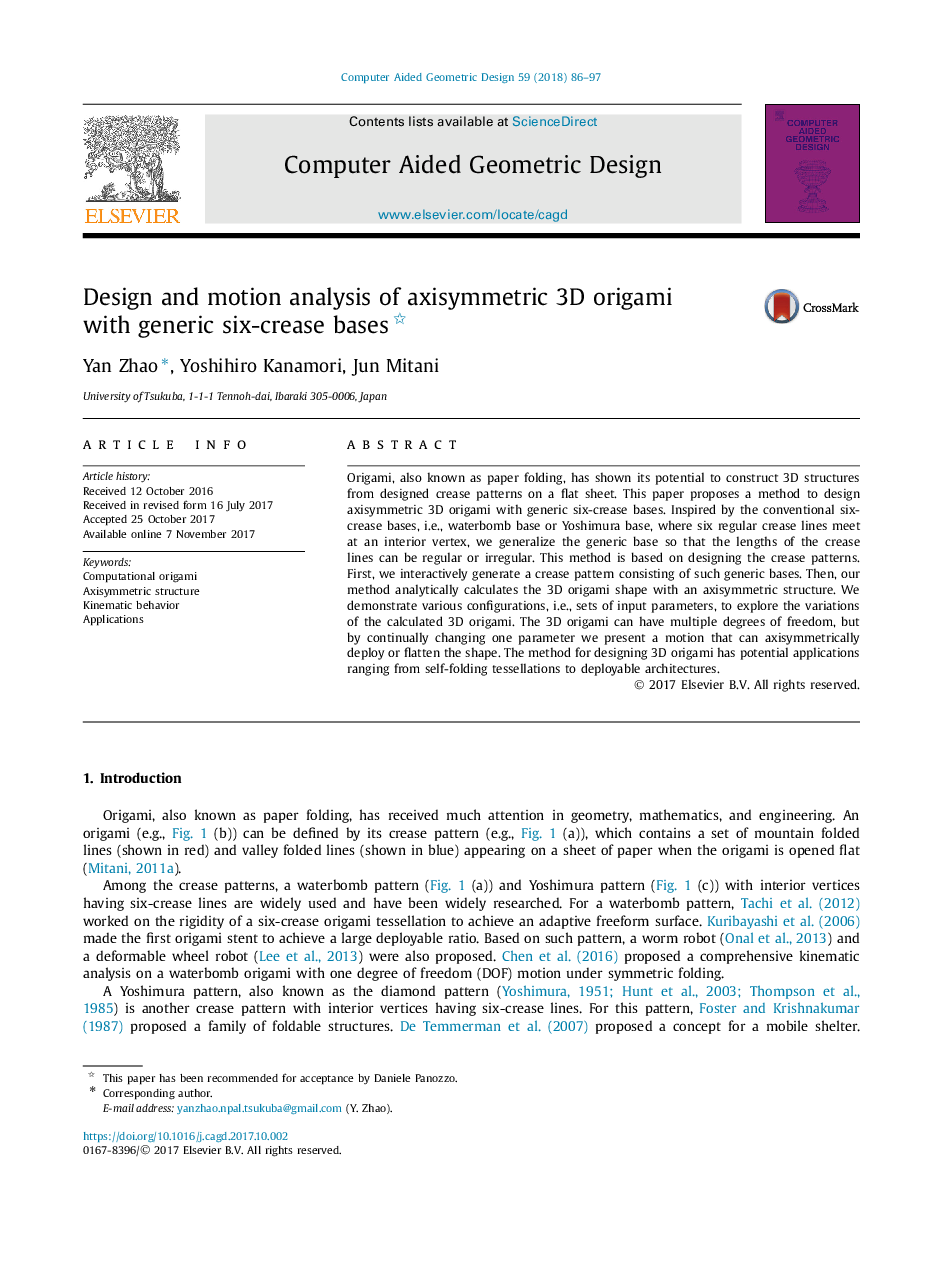| Article ID | Journal | Published Year | Pages | File Type |
|---|---|---|---|---|
| 6876659 | Computer Aided Geometric Design | 2018 | 12 Pages |
Abstract
Origami, also known as paper folding, has shown its potential to construct 3D structures from designed crease patterns on a flat sheet. This paper proposes a method to design axisymmetric 3D origami with generic six-crease bases. Inspired by the conventional six-crease bases, i.e., waterbomb base or Yoshimura base, where six regular crease lines meet at an interior vertex, we generalize the generic base so that the lengths of the crease lines can be regular or irregular. This method is based on designing the crease patterns. First, we interactively generate a crease pattern consisting of such generic bases. Then, our method analytically calculates the 3D origami shape with an axisymmetric structure. We demonstrate various configurations, i.e., sets of input parameters, to explore the variations of the calculated 3D origami. The 3D origami can have multiple degrees of freedom, but by continually changing one parameter we present a motion that can axisymmetrically deploy or flatten the shape. The method for designing 3D origami has potential applications ranging from self-folding tessellations to deployable architectures.
Keywords
Related Topics
Physical Sciences and Engineering
Computer Science
Computer Graphics and Computer-Aided Design
Authors
Yan Zhao, Yoshihiro Kanamori, Jun Mitani,
